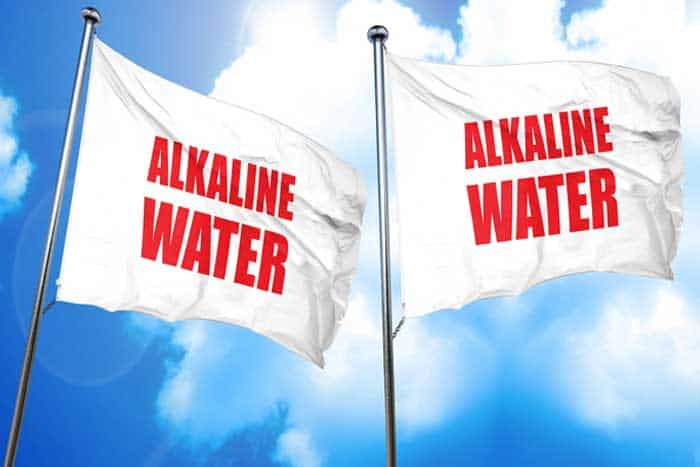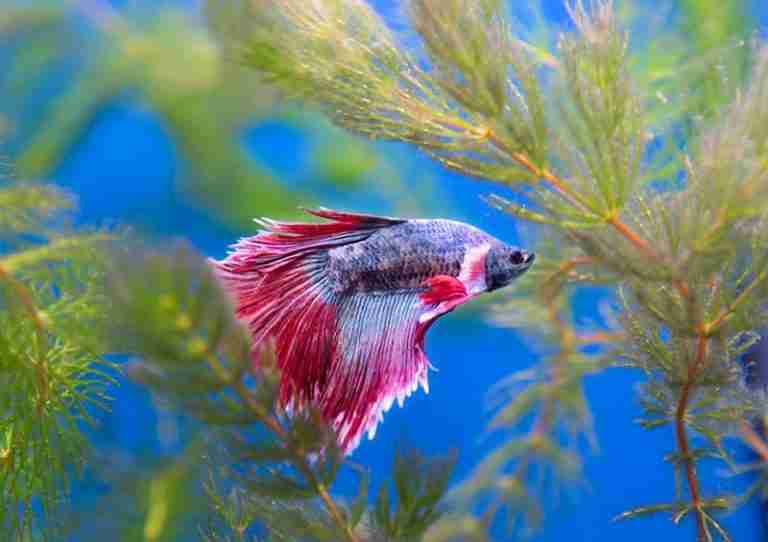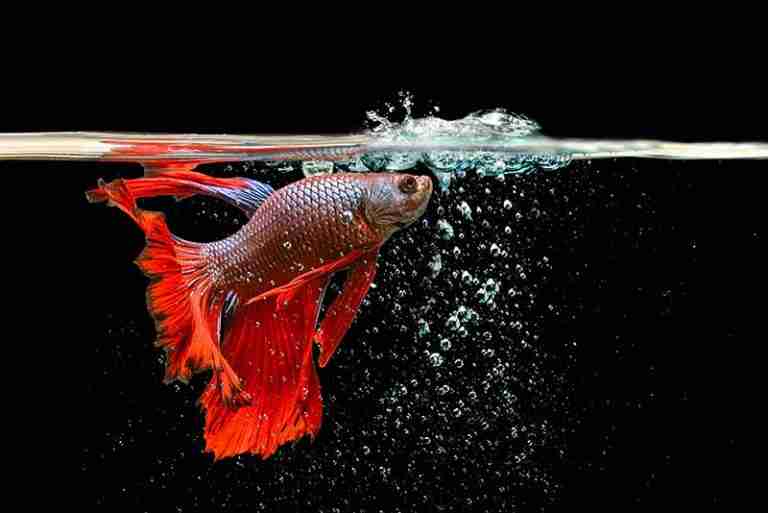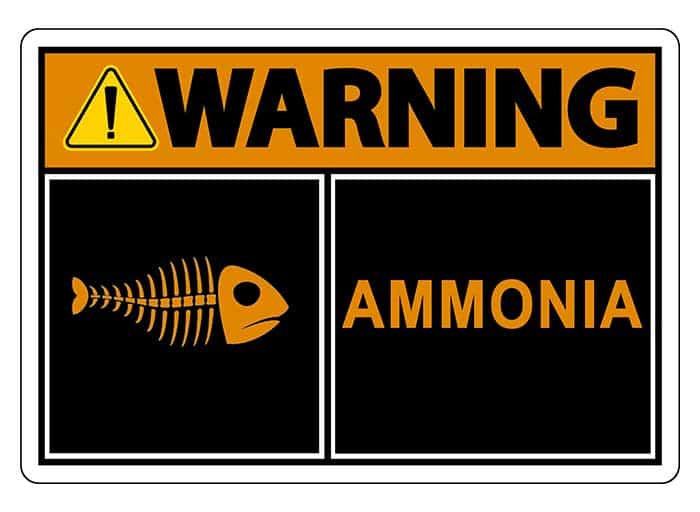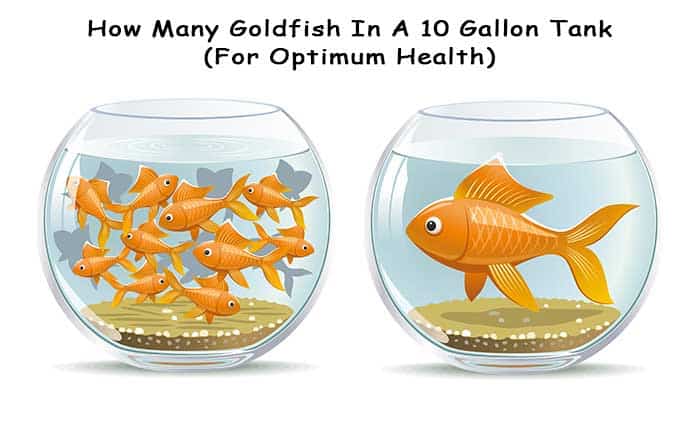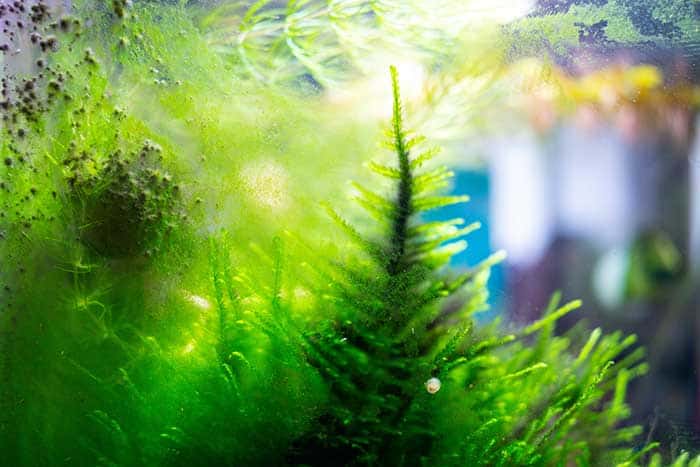Why Is My Fish Tank Water Green (And How to Fix It)
Even with constant cleaning, you may still be asking, “Why is my fish tank water green?” If you have green fish tank water, you’re not alone. It’s very common among aquarium owners for their fish tank water to turn green. Greenish water can be caused by a number of factors that result in an algae bloom.
Algae blooms occur from an overgrowth of algae in the tank. A free-floating algae bloom called phytoplankton causes water to turn green. This form of suspended algae blooms rapidly when light conditions and nutrients are plentiful, which quickly turns fish tank water green and cloudy, which sometimes resembles pea soup.
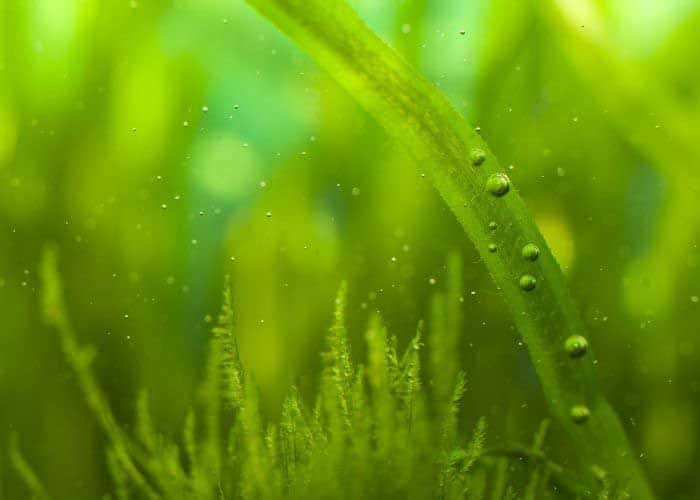
The cell structure of phytoplankton is made up of two distinct types of organisms:
- Protists – which are complex eukaryotic cells similar to protozoans, make up the larger group. These forms include diatoms (free-floating green water algae). They can reproduce rapidly and create large blooms in response to changing light and temperature and increasing nutrients such as nitrogen, iron, and phosphate.
- Cyanobacteria – also known as blue-green algae. These are photosynthetic bacteria that live in both freshwater and marine environments. Cyanobacteria can form dense mats on the surface of ponds and lakes, often called scums.
If your fish tank water is green and smelly, and you want to know how to prevent it, you have come to the right place.
This short article answers the question, “Why is my fish tank water green?” and any other questions regarding green aquarium water. I also provide several solutions based on my own experience to prevent it from happening in the future.
Why Does My Fish Tank Turn Green So Fast?
Your fish tank water can turn green quickly when the right conditions are present, sometimes in only a few hours. So what conditions can cause a sudden free-floating algae bloom?
Algae are living organisms that act like all aquatic plants in how they feed and grow. Algae harvest energy through light using photosynthesis, feeding on nutrients in the water, which are nitrates and phosphates. When light and nutrients are abundant, an algae bloom can occur and develop rapidly.
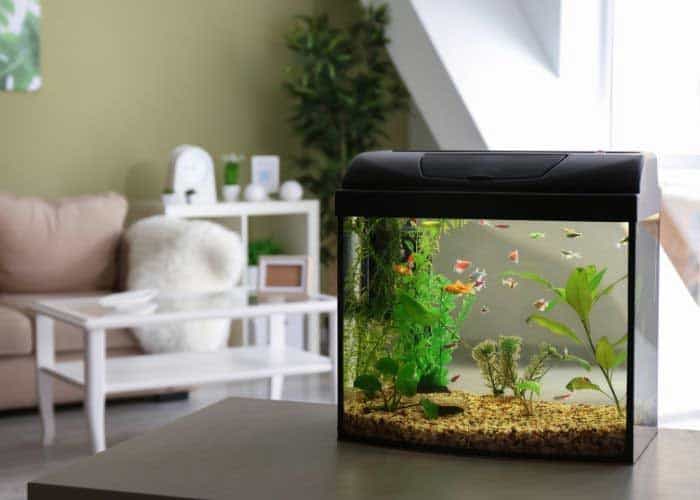
The list below is some of the reasons why algae may bloom:
- Keeping the aquarium light on for too long – A fish tank requires a natural light cycle similar to what is experienced in nature. Fish don’t need light at night, so you should only keep the aquarium light on for 8-12 hours per day.
- Strong sunlight – If your tank is near a window, it may be penetrated by strong direct sunlight during the day. These intense UV light rays have a powerful effect on algae that exists in your tank, causing a sudden growth spurt. Keeping your tank close to sunlight will also warm the tank, increasing algae growth rates.
- Warm Tank Water – If your tank water is too warm, it will hold less dissolved oxygen and increase the amount of carbon dioxide that plants and algae feed on.
- Overfeeding – Overfeeding your fish can cause algae blooms for two reasons. First, uneaten food decomposes, increasing ammonia levels and leading to an increase in nitrates and phosphate levels that algae feed on. Second, when fish are overfed, they produce more waste, adding nutrients to the water which algae use to grow.
- Too many fish in your tank – Too many fish cause excess fish waste, leading to high levels of nitrates in your aquarium water, feeding the algae and causing your water to turn green.
These are the main reasons why algae can suddenly grow and turn your fish tank water green so fast.
What Causes Green Algae On Aquarium Glass?
If you have green algae on your aquarium glass, the most likely cause is that your tank is too close to a window, causing strong sunlight to penetrate the tank. Algae move to the closest source of light to grow, which is the tank glass.
The best way to prevent this is to move your aquarium away from the window, or you can shade the tank from excessive light sources.
When you have excess algae in your tank it attaches to the glass for no apparent reason. As the algae settle, it attaches to almost anything, including other plants, decorations, and rocks. Free-floating algae usually wipe away easily, but different types of algae can bind more firmly.
You can use vinegar to clean difficult-to-remove algae from glass, which you can read about in my article: How To Clean A Fish Tank With Vinegar, and don’t forget to clean your tank decorations before the algae become stuck.
Live aquarium plants are more difficult to clean, and if algae are left, it suffocates plants. Find out How To Clean Aquarium Plants to keep them healthy and free from algae.
Is Green Water Bad For Fish?
Many people ask if green cloudy water will hurt their fish. The truth is algae that causes green cloudy water is not harmful to fish. In fact, many fish like to feed on this type of algae. The main problem with green water is that it can block out light, make photosynthesis difficult, and affect your aquarium plant’s growth.
Algae can also cause problems with fish tank oxygen levels because it competes with plants and fish for oxygen. Although plants and algae produce oxygen, this is during daylight hours when they consume carbon dioxide. During the night, plants and algae consume oxygen, leaving an oxygen-deficient environment for your fish.
Fish often swim at the surface when they need more oxygen, so if you notice your fish swimming at the top of the tank at night, it is likely that the combination of plants and algae is causing an oxygen deficiency in your tank.
Although the oxygen consumption of algae is usually far less than it produces during the day, some situations like shade and cloudiness can reduce light and can impact the overall production of oxygen throughout the day.
Below is a Youtube video that comprehensively covers the problem of green water, listing its causes, whether it is harmful, and some ways to fix it.
How To Clear Green Aquarium Water
Now that you understand the causes of green algae let’s look at some easy ways to clear your green water problem.
There are a few things you can do to clear green aquarium water:
- Increase Water Movement – Algae thrive in still water, so increasing the water movement in your fish tank makes it harder for algae to grow. You can do this by installing a powerhead or an aquarium pump.
- Install a UV Sterilizer – A UV sterilizer kills algae and bacteria.
- Change the Water – This is probably the most effective way to get rid of green water, but it’s also the most time-consuming. You need to do a partial water change of at least 50%.
- Use Chemical Filters – You can use chemical filters to remove algae from your water. The most common chemical filters are activated carbon and phosphate removers.
- Use Algae Eaters – Some fish, like plecos, will eat algae. These fish can help to keep your tank clean and clear.
- Temporarily turn off the tank light – If algae have no light, they quickly die off. Your green water problem should clear quickly by turning off your fish tank light for a few days.
- Add a chemical treatment – You can find a chemical treatment for most fish tank conditions, and algae are no exception. If you don’t mind adding chemicals to your tank, there are plenty to choose from. You can find a wide variety of chemical treatments from online pet stores. Some of the brands and treatments I use and recommend are API Algaefix, Microbe-Lift Algaway, and Fritz Algae Clean Out.
Using these steps should quickly reduce your green water algae to give you crystal clear water in no time.
I have an article on how to clean aquarium gravel algae: How To Clean Fish Tank Gravel Without A Vacuum (In 4 Steps).
How Do I Stop My Fish Tank Water Turning Green?
To stop your fish tank from going green due to sudden and rapid algae blooms, you have to remove or reduce anything that causes algae to thrive.
Preventing green aquarium water can be accomplished using the following steps:
- Don’t overfeed your fish – Fish should only be fed whatever they can eat within a few minutes, as any more will sit in the substrate where it rots away. You can also “fast your fish” by not feeding them for 1 or 2 days a week, which doesn’t harm them. Your fish will spend fasting days looking for food, allowing their digestive systems to rest.
- Remove uneaten food from the tank – If there is uneaten food in the tank, you should remove it before it rots and increases nitrate and phosphates for algae to feed on. In planted tanks, nitrates and phosphates feed your aquarium plants. They absorb these nutrients more efficiently than algae, preventing their growth. Using a gravel siphon will pick up most of the food waste in your aquarium. Just make sure to clean around your plants and decorations where food waste can also hide.
- Reduce lighting time – Light is the primary energy source for algae, derived through photosynthesis. Reducing light reduces the development of algae. Fish tanks only need 8 to 12 hours of light per day, so why not use a timer switch to alter your lighting period automatically?
- Move your aquarium away from windows or other strong light sources – Strong sunlight is one of the biggest causes of excess algae growth, so move your tank into an area of neutral light, or block light with a piece of card.
- Add some algae-eating fish – Certain fish crave algae and spend their day hunting it down and devouring it. Algae eaters like plecos get on with most other fish and are a great addition to any tank. Many algae eaters stop algae from covering your aquarium glass.
The above tips will make it much harder for algae to grow out of control and turn your tank water green.
Wrap Up
Most aquariums will suffer from algae blooms from time to time, and they are not harmful to fish, so there is no need to worry if you have green water. By following the steps in this guide, you will have crystal-clear water in no time.
Maintaining crystal clear water is easy when you understand the leading causes of green water algae. The algae themselves are just organisms that require food and light, so reducing them causes the algae to die.
Regular water changes go a long way to reducing potential problems within an aquarium, and algae are no exception. Weekly or two weekly 20-30% water changes can help keep waste levels down while removing many of the nutrients from the water that algae thrive on.
Thanks for reading! I hope this has helped you understand why your fish tank water might turn green and how you can fix it.


